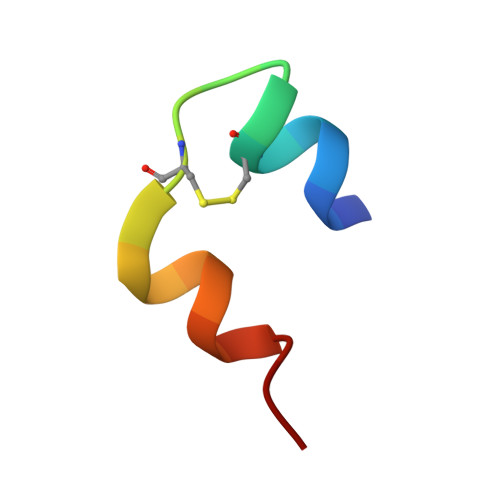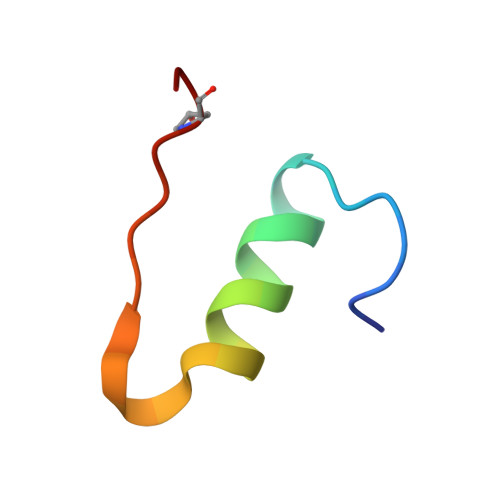4S-Hydroxylation of Insulin at ProB28 Accelerates Hexamer Dissociation and Delays Fibrillation.
Lieblich, S.A., Fang, K.Y., Cahn, J.K.B., Rawson, J., LeBon, J., Ku, H.T., Tirrell, D.A.(2017) J Am Chem Soc 139: 8384-8387
- PubMed: 28598606
- DOI: https://doi.org/10.1021/jacs.7b00794
- Primary Citation of Related Structures:
5HPR, 5HPU, 5HQI, 5HRQ - PubMed Abstract:
Daily injections of insulin provide lifesaving benefits to millions of diabetics. But currently available prandial insulins are suboptimal: The onset of action is delayed by slow dissociation of the insulin hexamer in the subcutaneous space, and insulin forms amyloid fibrils upon storage in solution. Here we show, through the use of noncanonical amino acid mutagenesis, that replacement of the proline residue at position 28 of the insulin B-chain (ProB28) by (4S)-hydroxyproline (Hzp) yields an active form of insulin that dissociates more rapidly, and fibrillates more slowly, than the wild-type protein. Crystal structures of dimeric and hexameric insulin preparations suggest that a hydrogen bond between the hydroxyl group of Hzp and a backbone amide carbonyl positioned across the dimer interface may be responsible for the altered behavior. The effects of hydroxylation are stereospecific; replacement of ProB28 by (4R)-hydroxyproline (Hyp) causes little change in the rates of fibrillation and hexamer disassociation. These results demonstrate a new approach that fuses the concepts of medicinal chemistry and protein design, and paves the way to further engineering of insulin and other therapeutic proteins.
Organizational Affiliation:
Division of Chemistry and Chemical Engineering, California Institute of Technology , Pasadena, California 91125, United States.


















